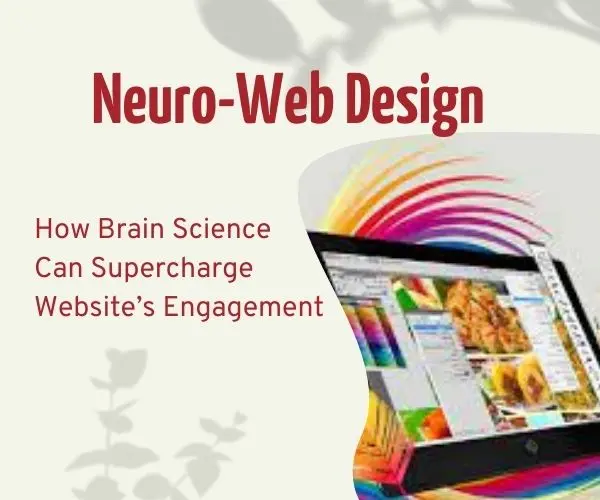The Science of Digital First Impressions
The internet is flooded with millions of websites, but only a few succeed in truly captivating visitors and turning them into customers. With human attention spans shrinking and competition growing fiercer, businesses must rethink how they design and optimize their websites.
A study by Google found that users form a judgment about a website in just 50 milliseconds—that’s faster than the blink of an eye! This means that the way a website looks, loads, and functions plays a crucial role in determining whether a visitor stays or leaves.
This is where Neuro-Web Design comes in—an approach that combines cognitive psychology, neuroscience, and behavioural science to create websites that align with how the human brain processes information, makes decisions, and reacts to stimuli.
At Digitalizeindianow, we specialize in designing websites that don’t just look great but are scientifically optimized to engage visitors, reduce bounce rates, and drive higher conversions. In this in-depth guide, we’ll explore how brain science can transform website engagement, leading to stronger brand recall, improved user experience, and increased sales.
The Psychology of Website Engagement
To truly capture and hold a visitor’s attention, we need to understand how the brain processes digital content. Here are the key psychological principles that influence user behaviour on websites:
Instant Judgments Shape User Behaviour
First impressions are crucial in the digital world. Studies show that users decide whether to stay or leave within 3 seconds of landing on a website.
During this time, the brain evaluates:
- Visual Appeal – Does the website look professional and attractive?
- Clarity – Is the purpose of the website instantly clear?
- Navigation – Can users find what they need quickly?
If a website fails in any of these areas, visitors leave immediately. Digitalizeindianow ensures that first impressions are powerful by implementing visually compelling designs, clear messaging, and intuitive navigation.
Cognitive Load: The Brain Avoids Complexity
The human brain prefers simplicity over complexity. If a website has too much clutter, excessive text, or an overwhelming number of choices, users feel mentally fatigued and abandon it.
How Digitalizeindianow reduces cognitive load:
- Minimalist, distraction-free design
- Clear and simple navigation
- Strategic use of whitespace to avoid content overload
Emotional Triggers: How Feelings Drive User Decisions
Neuroscience proves that 90% of decisions are driven by emotions rather than logic. Websites that evoke strong emotional responses create better engagement, trust, and brand loyalty.
How emotions influence website engagement:
- Red & Orange create urgency (used for "Buy Now" buttons).
- Blue & Green build trust (used in banking and healthcare websites).
- Faces & Human Expressions make content relatable.
At Digitalizeindianow, we strategically use colour psychology, high-impact images, and storytelling to build emotional connections with visitors.
Neuro-Web Design Principles for Maximum Engagement
Visual Hierarchy: Directing the Eye for Impact
People don’t read websites word-for-word; instead, they scan them in an F-pattern or Z-pattern.
How Digitalizeindianow uses visual hierarchy:
Bold headlines to grab attention quickly.
Contrasting CTA buttons to make actions clear.
Whitespace and structured layouts to guide the reader’s eyes naturally.
The Power of Micro-Animations
Small, subtle animations—such as a button expanding when hovered over—provide the brain with instant feedback and increase interactivity.
Examples of micro-animations:
A shaking "Add to Cart" button to draw attention.
Progress bars to show form completion.
Smooth transitions between sections for a seamless experience.
Hick’s Law: Keep Choices Simple
Hick’s Law states that the more choices a person has, the longer it takes to decide. If a website presents too many options, visitors feel paralyzed by choice and leave.
How to apply Hick’s Law for better engagement:
Limit navigation menus to 5-7 options.
One clear CTA per page (e.g., "Get Started" or "Sign Up").
Simplify checkout or sign-up processes to reduce friction.
The Von Restorff Effect: Making Key Elements Stand Out
The human brain remembers things that are visually different from their surroundings.
Bright CTA buttons on a muted background help drive clicks.
Bold fonts draw attention to important messages.
Unique icons & visuals highlight key information.
The Zeigarnik Effect: Creating a Sense of Incompletion
People tend to remember unfinished tasks more than completed ones. Websites can use this to keep visitors engaged by:
Showing progress bars (e.g., "You're 75% done—just one step left!").
Providing teasers ("Unlock exclusive content inside!").
Encouraging interactivity with quizzes, forms, and gamification.
Social Proof & Trust Signals: Building Credibility
People trust what others recommend.
Key elements that build trust:
Customer reviews & testimonials.
Security badges (SSL, verified payment options).
Case studies & real success stories.
The Peak-End Rule: Creating a Memorable Experience
People remember two moments of any experience:
The most intense moment (peak)
The final moment (end)
A website should leave a lasting impression by:
Providing an interactive, engaging experience from start to finish.
Ending with a strong CTA, thank-you message, or reward.
How Digitalizeindianow Implements Neuro-Web Design for Business Growth
At Digitalizeindianow, we merge creativity with brain science to build highly engaging, conversion-optimized websites. Our process includes:
User Behaviour Analysis & Heatmaps
We track user movements, clicks, and scroll depth to understand how visitors interact with a website.
A/B Testing for Maximum Engagement
We test different layouts, colours, fonts, and CTAs to find what works best for conversions.
AI-Powered Personalization
Our AI tools personalize content, product recommendations, and marketing messages based on user behaviour.
Ultra-Fast & Frictionless Experience
Websites load in under 2 seconds.
Simple, clutter-free navigation.
Intuitive, conversion-driven design.
Mobile-First Approach
Thumb-friendly navigation.
Fast-loading mobile pages.
Seamless responsiveness across all devices.
The Future of Website Engagement is Neuroscience
Traditional web design is no longer enough. Businesses must adopt science-backed strategies that align with how the human brain processes information and makes decisions.
At Digitalizeindianow, we don’t just build websites—we create engaging digital experiences that captivate visitors and drive revenue.
Want a website designed with brain science in mind? Contact Digitalizeindianow today and let’s build a high-converting, psychologically optimized website that keeps visitors hooked!
